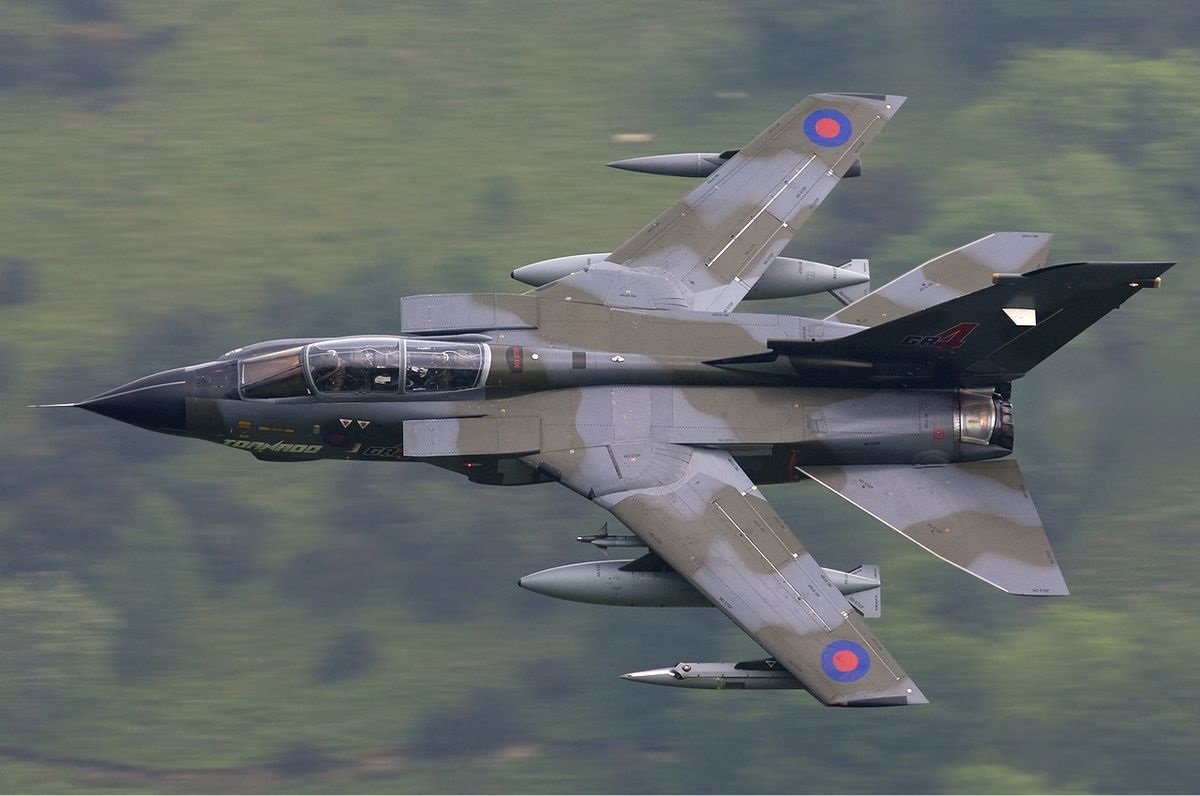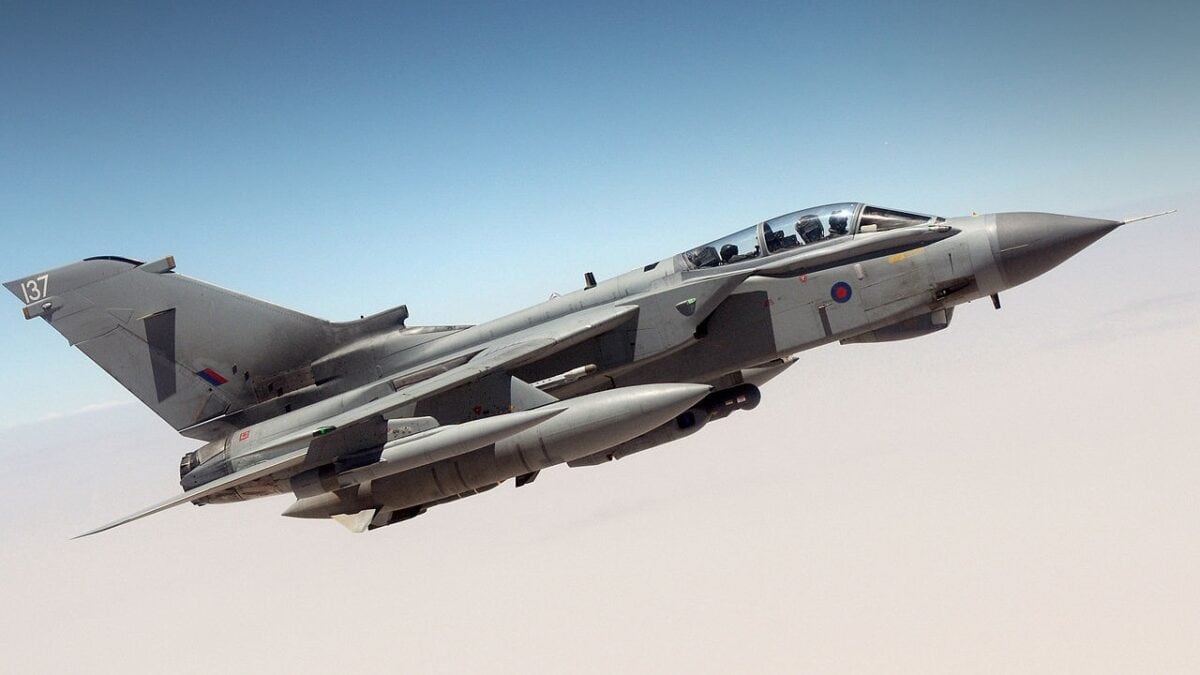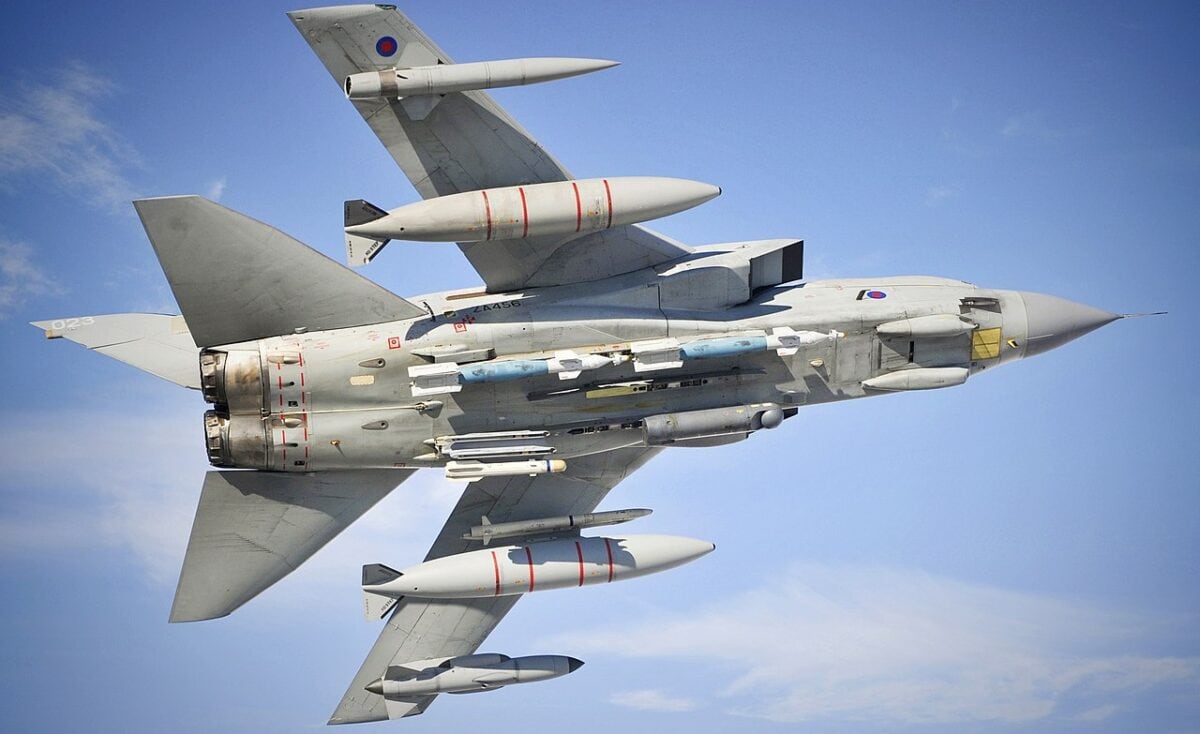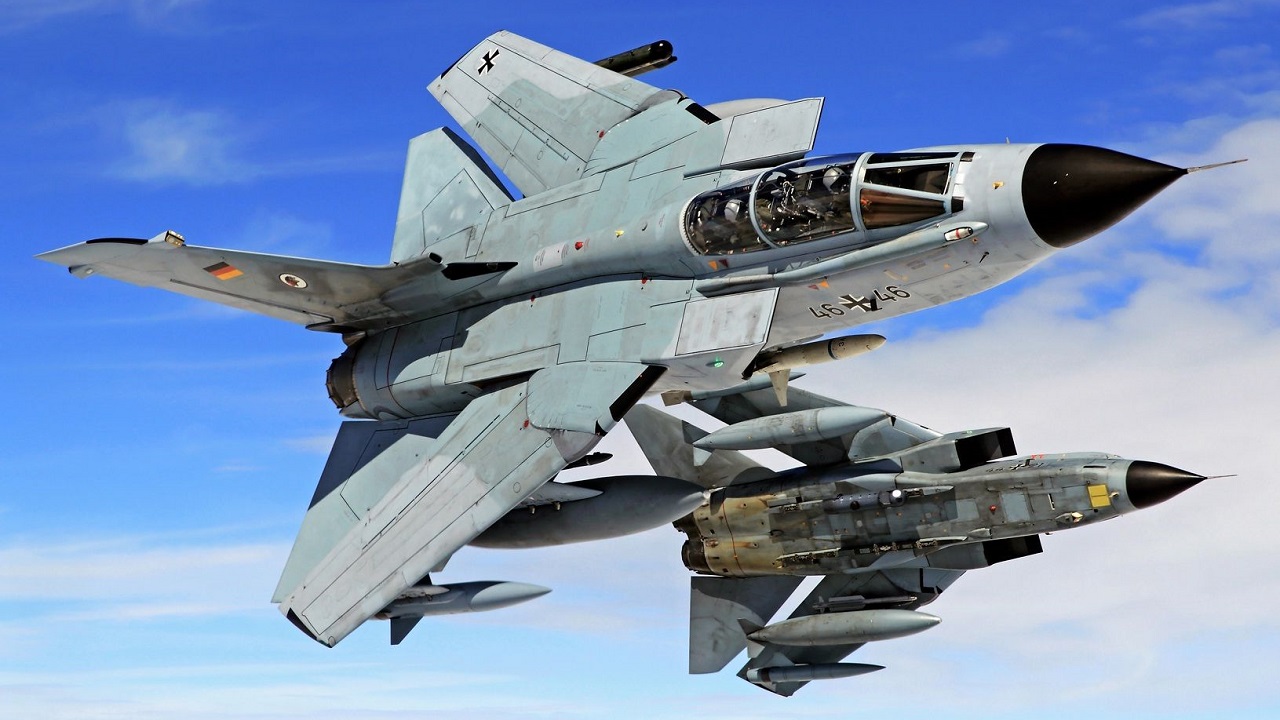The winds are turning on the idea of sending airplanes to Ukraine in support of the fight against Russia. The latest airframe to make the list is the Panavia Tornado, a strike plane developed in partnership between the UK, Germany, and Italy in the 1960s, and first took flight in 1974.
The Panavia Tornado is one of several NATO aircraft that could be sent to fuel Ukraine’s fight in a war where neither side has been able to establish air superiority.
NATO Countries Offering Up Russian MIG-29s for the Cause
Earlier this month UK Defence Secretary Ben Wallace announced that Britain was not planning to send RAF Eurofighter Typhoons to Kyiv. Fortunately, Wallace’s announcement was somewhat offset a week later, when Poland announced its intention to send MiG-29 Fulcrums to Ukraine – thus becoming the first NATO member to fulfill the Ukrainian government’s increasingly urgent requests for warplanes – and right on the heels of that announcement, fellow NATO member Slovakia followed suit by announcing that they would be sending their entire 13-jet fleet of Fulcrums to Kyiv.
Now, another Cold War option may be sent East to Ukraine. While the UK announced it wouldn’t send Typhoons, when I read between the lines, what stands out for me is a warbird that 10 Downing Street did *not* rule out, that being a multirole strike aircraft that the Imperial War Museum describes as “The backbone of the RAF for nearly 40 years”: the Panavia Tornado.
Panavia Tornado: Early History and Specifications
The Panavia Tornado made her maiden flight on August 14, 1974, and was officially introduced into RAF service in 1979. The plane was manufactured by Panavia Aircraft GmbH – headquartered in Hallbergmoos, Deutschland – and developed as a joint venture between the UK, Italy, and West Germany. Three primary variants were produced: the Tornado ADV (air defence variant) interceptor, the Tornado ECR (electronic combat/reconnaissance) SEAD (Suppression of Enemy Air Defences) platform, and the Tornado IDS (interdictor/strike) fighter-bomber.
Specifications included a fuselage of 54 feet 9.5 inches, a fully-spread wingspan of 45 feet 7.25 inches (28 feet 2.5 inches when swept at a 68-degree angle), a height of 19 feet 6 inches, an empty weight of 30,622 pounds, and a max takeoff weight of 44,622 lbs. Max airspeed was 1,452 mph (1.89 Mach) at 36,000 ft. Armament consisted of two IWKA-Mauser 27mm cannons, two AIM-9 Sidewinder missiles, and 18,000 lbs. of ordnance.
Tornados ended up proving their own worth in multiple conflicts, from Bosnia in 1995 to Kosovo in 1999 and Libya in 2011. But undoubtedly the most famous and harrowing mission the Tornado drivers ever performed was during the 1991 Persian Gulf War – Operation Desert Storm in the U.S., Operation Granby to the Brits – wherein RAF Tornado GR1s attacked Iraqi air bases at low-level with Hunting JP233 anti-runway cluster bombs. In the process, six Tornados were shot down; as noted by RAF Museum historian Kris Hendrix (in an interview with Mark Smith in an April 2019 Popular Mechanics article), “Although highly successful, the Tornado suffered higher losses than the other Allied combat aircraft due to its vulnerability at low altitude.”
From a personal standpoint, one of the enduring images of the Gulf War was the bloodied, battered face of then-RAF Squadron Leader (equivalent rank of a Major in the U.S. Air Force) and Tornado pilot John Peters as he was amongst the Coalition pilots paraded on Saddam Hussein’s Iraqi TV propaganda broadcasts.
Panavia Tornado: Where Are They Now?
For military aviation museum buffs out there, you can view a static display GR1 Tornado at the National Museum of the United States Air Force at Wright-Patterson AFB near Dayton, Ohio. According to the Museum’s info page, “The aircraft on display flew with the RAF’s 17 Squadron from Dhahran, Saudi Arabia, where it sported desert camouflage and the name Miss Behavin’. The aircraft is currently painted as an aircraft assigned to 617 Squadron. It came to the museum in October 2002 as a donation from the RAF.”
A total of 990 Tornados – spread out amongst the three variants – from 1979 to 1998. The Tornado remains in service with the Luftwaffe (German Air Force), Italian Air Force, and Royal Saudi Air Force. Meanwhile, the Brits retired theirs in 2019.

Panavia Tornado. Image Credit: Creative Commons.

A Royal Air Force Tornado GR4 aircraft on patrol over the Middle East. The Tornado GR4 is a variable geometry, two-seat, day or night, all-weather attack aircraft, capable of delivering a wide variety of weapons.

A IX(B) Sqn Tornado GR4 training for deployment to Afghanistan. Pictured here on 12 October 2012 is a Tornado GR4 aircraft as it undertakes a training sortie.
Which begs the question: assuming these retired RAF Tornados haven’t been completely dismantled yet or allowed to lapse into a state of total disrepair, why not send the jets to Ukraine?
Tornados Feasible for Ukraine?
The UK’s excuse for not sending Eurofighters to Ukraine mirrors that of the Biden Administration’s recalcitrance about sending the F-16 Fighting Falcon AKA “The Viper,” i.e. the claim that the planes would be too complicated for a Slavic-non-Western, non-Anglo nation like Ukraine. In truth, the reason is that the Ukrainian Air Force does not have the luxury of time to train on the aircraft, and learn maintenance for the particular bird. The fact that Poland, which like Ukraine is also a Slavic language-speaking nation and former member of the Warsaw Pact, already has F-16-C/D Block 52s, thus becoming the first Warsaw Pact nation to acquire the Viper.
If the Poles – not to mention the Iraqis – can become proficient with the F-16, then by golly, the Ukrainians can become proficient with not only the Viper and/or the Typhoon and/or the Tornado for good measure.
MORE: PAK DA – Is Russia New Stealth Bomber a Joke?
MORE: Was the F-14 Tomcat Retired Too Early?
MORE: Nimitz-Class – The Best Aircraft Carrier Ever?
Christian D. Orr is a former Air Force Security Forces officer, Federal law enforcement officer, and private military contractor (with assignments worked in Iraq, the United Arab Emirates, Kosovo, Japan, Germany, and the Pentagon). Chris holds a B.A. in International Relations from the University of Southern California (USC) and an M.A. in Intelligence Studies (concentration in Terrorism Studies) from American Military University (AMU). He has also been published in The Daily Torch and The Journal of Intelligence and Cyber Security. Last but not least, he is a Companion of the Order of the Naval Order of the United States (NOUS). In his spare time, he enjoys shooting, dining out, cigars, Irish and British pubs, travel, USC Trojans college football, and Washington DC professional sports. If you’d like to pick his brain in-person about his writings, chances are you’ll be able to find him at the Green Turtle Pasadena in Maryland on Friday nights, singing his favorite karaoke tunes.

